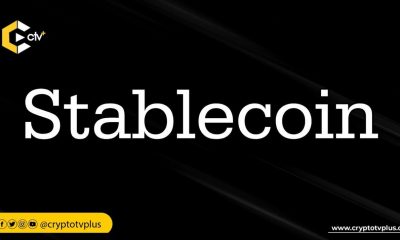Education
Stablecoins; What are they and What Types are there?

Stablecoins are simply cryptocurrencies with prices designed to be pegged on a more stable asset. These stable assets can be fiats like dollars or pounds, exchange-traded commodities like gold and silver or an existing cryptocurrency.
BitUSD and NuBits are amongst the first stablecoins created in the crypto market. Prices of cryptocurrencies like bitcoins and other altcoins are so volatile for users, consequently, instead of losing out on the market, Stablecoins can be used to prevent loss of asset value.
Other reasons why stablecoins are used include:
- Most of them are backed by real-world assets.
- They give some level of protection to traders and holders.
- They can be used by unbanked businesses and individuals to access liquidity.
- They are less complex than cryptocurrencies.
Read this also:
- Tether Ready to Launch Stablecoin Pegged on British Pounds
- Exploring Stablecoins, DeFi, NFT, GameFi, Metaverse and Fantokens
- IMF Hints at Private Stablecoins Dominating as The World’s Reserve Currencies
- US Treasury to Allow Banks use Blockchains, Stablecoins for Payments
Here are the four types of stablecoins in existence (until we see more in an ever evolving crypto world):
- Fiat-backed Stablecoins
These kinds of Stablecoins are off-chain assets and pegged to one or more currencies issued by a regulated third party. Sometimes it can be the central bank or another entity. Because of this structure, the value of the stablecoin is always equated or very closely related to the fiat.
In terms of total supply in circulation, issuers of this kind of Stablecoins are not allowed to issue more quantities of the coins than the amount of reserve available.
For example, the issuer of Tether (USDT) cannot release more than 50 million USDT if they have only $50 million. The same principle applies to Gemini Dollar (GUSD) and True USD (TUSD).
Although the backed assets behind the Fiat-backed stablecoins are off-chain, these stablecoins are tradable on exchanges and can be redeemed from the issuer.
- Commodity-backed Stablecoin
Unlike Fiat-backed stablecoins, commodity-based stablecoins are pegged to assets like real estate, gold, silver, and other tradable metals. Therefore their value is controlled by these commodities (one or more) in the market.
One of the essence of commodity-backed stablecoins is to give people access to invest in these commodities even when they cannot have direct access to them. Hence, the value of their investment is tied to the stablecoin. As the commodity increases in value so does the stablecoin and vice versa.
Paxos Gold (PAXG) and Tether Gold (XAUt) are examples of commodity-backed stablecoins pegged on a London Good Delivery gold bar. Therefore, one PAXG or XAUt token should be equal to one ounce of the gold bar mentioned.
- Cryptocurrency backing
These stablecoins are backed by cryptocurrencies as collateral. Transactions done with cryptocurrency-backed stablecoins are some on-chain with smart contract instruments which is different from the Fiat-backed asset.
When accessing this kind of stablecoins, users take loans while locking up collateral on-chain so that they can pay off their debt without any disagreement.
While the loan is active, the smart contract initiated will most likely not allow the value of the collateral to reduce below the loan taken. Therefore, the collateral can be liquidated if the value gets so close.
It’s also important to note that there are no third parties regulating the transactions around cryptocurrency-backed stablecoins as it is purely decentralized. Examples include Havven, DAI, and Wrapped Bitcoin (WBTC).
- Algorithmic Stablecoins
Algorithmic stablecoins, sometimes called Seigniorage-style coins, use computer algorithms to control the supply and value of the stablecoin. This is similar to the actions Central Banks initiate in printing and destroying currencies.
Although they can be pegged to a different asset, they are not backed by any collateral. This makes them so volatile and risky for investors.
An example is how the Tether UST/Luna project operated leading to the its crash, loss of billions of dollars for the company as well as investors. USDD by Tron is also another algorithmic stablecoin.
While stablecoins seem to be easier to use, there are some criticisms about them. These include the absence of regulations and a high level of volatility for those backed by cryptocurrencies.
Then for the algorithmic stablecoins, there are no stable systems that can assure the safety of assets to a desirable degree. The Luna crash presents a perfect example of this.
Stablecoins like cryptocurrencies are still being developed and improved on to ease payment around the world. It’s advisable to always research before investing in any project at any time.
What do you think of this article? Share your comments below.

























Pingback: Stablecoins; What are they and What Types are there? – CryptoTvplus
Pingback: Different Types Of Cryptocurrencies And Their Importance | MarusichPropiedades
Pingback: Cryptocurrency Gift Strategies For Not - Dollar-a-Day CBD
Pingback: Cryptocurrency Gift Strategies For Not – Somnath Datta